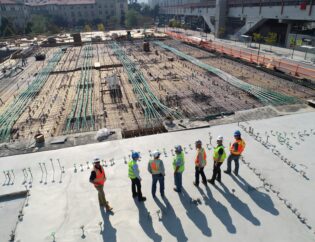
NAVIGATING THE DAVIS-BACON ACT AND ITS IMPACT ON THE CONSTRUCTION INDUSTRY
In 1931, under the leadership of Herbert Hoover, the Davis-Bacon Act (DBA) came into effect, laying the foundation for fair compensation in the construction industry. The primary goal of this legislation is to ensure that workers receive the prevailing wage for their contributions to construction projects. Over the years, the DBA has become a cornerstone, not only for securing fair wages but also for triggering a series of related acts that collectively shape the labor landscape. Let's delve into the intricacies of the Davis-Bacon Act and its associated regulations.
Understanding the Davis-Bacon Act:
- Determining Prevailing Wages: The Department of Labor plays a pivotal role in setting the tone for fair compensation. Through wage surveys and various tools, local prevailing wage rates are determined, taking into account the area and the type of construction project.
- Contract Triggers: A federally funded construction contract exceeding $2,000 activates the labor requirements outlined in the Davis-Bacon Act. This legislation, however, doesn't operate in isolation; it often invokes provisions from other related acts, such as the Copeland Anti Kickback Act, CWSSHA, and the Fair Labor Standards Act.
- Key Provisions:
- Prevailing wages represent the minimum compensation, including fringe benefits, for specific tasks, determined by project type and location.
- Certified payrolls are comprehensive reports ensuring that workers are paid in accordance with prevailing wage rates for the work performed onsite.
- Regulatory Oversight:
- The Office of Labor Relations takes charge of administering and enforcing prevailing wage requirements.
- The Department of Labor manages labor reporting, ensuring compliance with the various acts that come into play.
- Historical Context: The Davis-Bacon Act, established in 1931, was a pioneering move to mandate the payment of local prevailing wages on public works projects, specifically for laborers and mechanics.
- Wage Determinations: Detailed lists of wage rates and fringe benefits per trade classification within a specific county provide transparency and guidelines for employers.
- Workforce Classifications:
- A journeyperson denotes a fully trained tradesperson in a specific trade.
- An apprentice is an individual registered in a DOL-approved apprenticeship program for a designated trade classification.
- Broader Labor Legislation:
- The Fair Labor Standards Act (FLSA) establishes minimum standards for hours and pay.
- The Contract Work Hours and Safety Standards Act (CWHSSA) mandates time-and-a-half pay for overtime hours.
- The Walsh-Healy Act, a precursor to labor rights, introduced the 40-hour work week and ensured the minimum wage equaled prevailing wage rates.
- Preventing Unethical Practices:
- The Copeland "Anti-Kickback" Act safeguards workers by prohibiting employers from demanding kickbacks.
- Project Scope and Application: Public works projects subject to Davis-Bacon Act prevailing wages are mandated when federally funded or assisted contracts exceed $2,000.
- Documentation and Accountability:
- Payroll records encompass various documents creating certified payroll reports, such as time cards, canceled checks, and work schedules.
- Daily logs serve as onsite workers' sign-in and sign-out sheets.
- Understanding Terms:
- A site of work refers to the physical location of the construction project.
- A secondary site of work is a location primarily created for project-related activities.
- Scope of Work: The scope encompasses the tasks a company is expected to perform onsite and helps determine the trade classifications to be utilized.
The Davis-Bacon Act and its related acts stand as pillars of fairness and accountability in the construction industry. As we navigate the intricacies of these regulations, it becomes evident that they not only protect the rights of workers but also foster an environment of transparency and ethical practices. Embracing the spirit of these acts ensures that the construction landscape remains equitable and just for all stakeholders involved.










